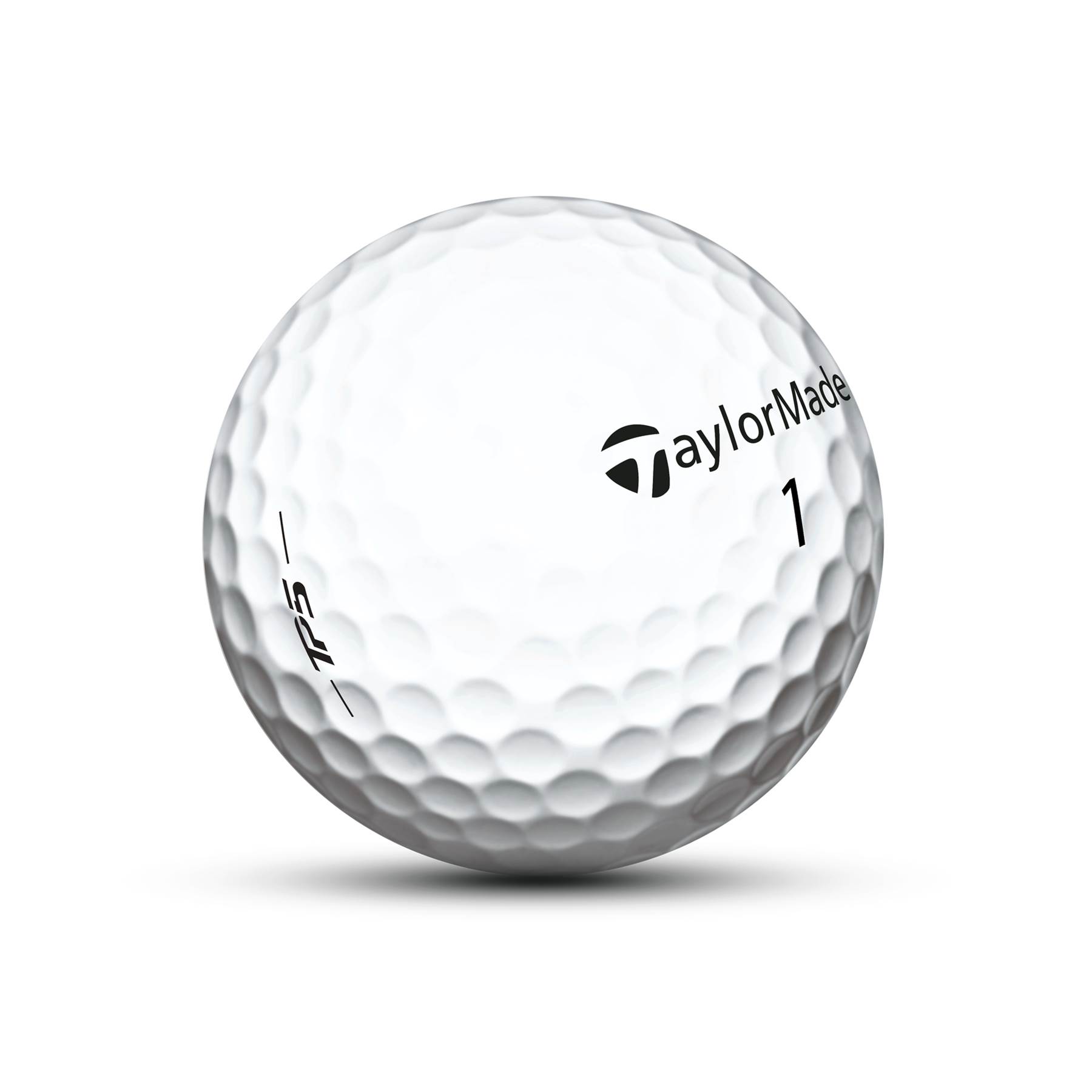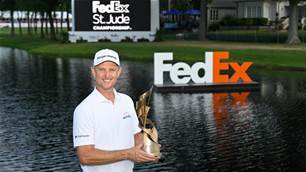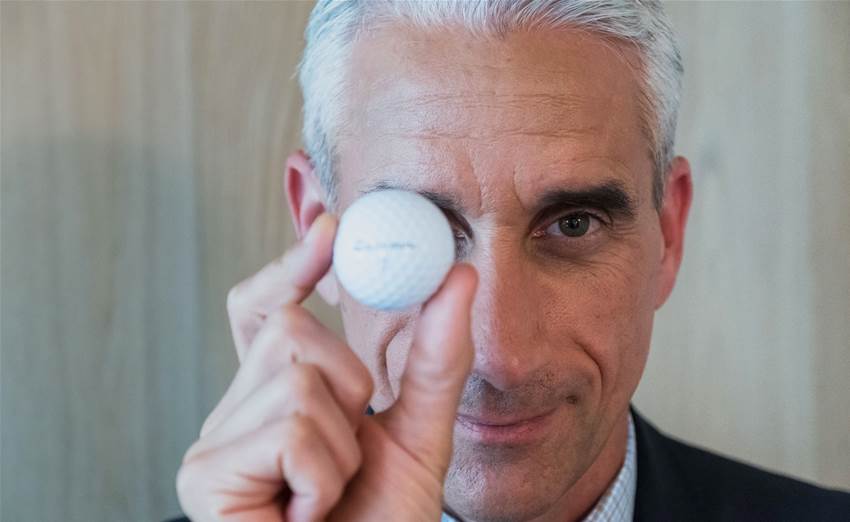Ever wondered what it is like to run one of the biggest golf companies in the world? Or how Tiger Woods’ contract works? Or even, where a golf CEO sits in the distance debate?
In your brief time with Tiger on staff, how differently does he move the equipment needle with golfers than other Tour players?
That is kind of the old adage. Can you build an algorithm to tell how any given athlete can either move the needle or inspire golfers to buy products.
And a lot of individuals will look at that and say ‘How do I find a return on investment on any particular athlete?’. We don’t really look at it like that.
 We look to the Tour to not only help validate the things we are doing, but to help provide insights into the future. So, when we get to test new technologies, advanced technologies that aren’t even out yet, and test those technologies with the world’s best players, that’s R&D effort for us.
We look to the Tour to not only help validate the things we are doing, but to help provide insights into the future. So, when we get to test new technologies, advanced technologies that aren’t even out yet, and test those technologies with the world’s best players, that’s R&D effort for us.
RIGHT: McIlroy has been vocal since his switch to TaylorMade and its golf balls and is one of the players on staff who goes without a TaylorMade logo on his headwear. PHOTO: TaylorMade.
Tiger has been very involved in advanced technology for TaylorMade.
He has provided an incredible feedback in his willingness to not only test these products but to provide us an even deeper understanding of how they work on his level. But the other thing I love, whether it’s Tiger or Rory or any of our athletes, they also help us with amateur play.
Believe me, the technologies that we develop, while they benefit the world’ best players, they are really designed to help everybody else. And that’s really, if you listen to Tiger closely, or Rory, in their discussions about the products that they play, their comments are, ‘Well this will definitely help me and my game, this is really going to help amateur golfers all around the world to a greater extent than it will benefit me’.
"Making the game more difficult is not in the best interests of the game. Making the game more accessible, making it easier to play, making it more exciting, making it more approachable, let’s focus on those things." - David Abeles.
So, we view them as not only an extension of our company in terms of the cultural and environmental attributes that we build into this great organisation, we view them as an extension of R&D, we also view them as individuals that are really excited about carrying the message of our products and technology to golfers everywhere.
That’s kind of how we look at it. They are members of our team. When we say Team TaylorMade, that’s not about ‘Oh, you’re a contracted athlete’ you are actually embedded as part of the cultural fabric of our company. And every one of the athletes that we have talked about today, and the 100s around the world, we choose them for those reasons. And I am proud of that, because we have built a great team.
You have previously said any change or rollback to golf equipment would be detrimental to the game, obviously people might interpret that to be purely self-preservation from a brand perspective. Why do you think a rollback or bifurcation would be so harmful to golf?
The reason that we explicitly believe that any rollback in any form would be detrimental to the game, is because when you play golf as a golfer whether as an amateur or professional, I have yet to see any golfer walk off the 18th green saying ‘This game is way too easy, I hit it way too far, my scoring is way too low, so I am going to go and figure out how to do something else’.
I believe that the future of golf, like the future of any industry has to advance, it has to move forward. Which means technology is going to drive, at some level, the advancement of the industry.
So, even the concept of going backwards to me is counterintuitive to where we think the game needs to go.
Making the game more difficult is not in the best interests of the game. Making the game more accessible, making it easier to play, making it more exciting, making it more approachable, let’s focus on those things. Let’s not focus on rolling the golf ball back to preserve literally one, one hundredth of one percent of the golf courses around the world, which quite candidly don’t need any preservation.
I’ll give you a perfect example.
 I was in Melbourne and for the first time in my life I got a chance to play Royal Melbourne. I had been wanting to play this golf course for my entire time in and around golf, 25 years I have always wanted to play there. And I had this incredible experience out at Royal Melbourne.
I was in Melbourne and for the first time in my life I got a chance to play Royal Melbourne. I had been wanting to play this golf course for my entire time in and around golf, 25 years I have always wanted to play there. And I had this incredible experience out at Royal Melbourne.
We played the course from the white tees, which was probably, my guess is 6,500-6,600 yards. And do you know what? The way the golf course was setup, the way the greens are setup, and we had some pretty good players in our group, it is a very difficult golf course. And in the end it had nothing to do with yardage, you had to hit the right shots at the right time, and make the right putts and read the greens, it had nothing to do with the fact that playing a TP5 or TP5x golf ball gave me two or three miles an hour more ball speed. Or playing a TwistFace driver reduced my dispersion or created more accuracy for me.
So, I just don’t believe that there is an issue in distance in golf. And I really don’t think that golfers want to go backwards.
I also believe on the concept of bifurcation, and this is really on behalf of TaylorMade and my beliefs as well obviously, that consumers in this sport, are very fortunate, because they get to play the same products that the world’s best players get to play. And they get to play the same golf course in many regards as those players get to play. So, creating two separate standards makes no sense to me.
And I truly believe this, and I appreciate that the USGA and R&A are coming together to do another round of distance reporting, but we have so much distance reporting and analytics that would indicate at every level that is not the issue with the growth of the game of golf.
The issue with the growth of the game of golf are the things that you would actually implement that would advance the game and advance technology and do the things that we just talked about than otherwise.
So, I don’t think it makes any sense.
It has nothing to do with preservation, although I do believe that some manufacturers and more importantly golfers would leave the game if there was a rollback.
So, I will leave you with this point on this question, when we heard the dialogue about a 20 percent rollback in golf ball, I just want you to think about the 12 handicapper that you play golf with on a Saturday or Sunday, that hits the golf ball today 230 or 240 metres off the tee. And that individual is going to show up, if there was theoretically if there was a rule change, and hit the golf ball 190 to 200 metres off the tee.
Do you think that individual is going to love playing the game more or do you think they are going to be confused as to whether they want to come back?
It makes no sense. So, as you can tell I’m pretty passionate about our position.
Is your personal position in any way influenced through your time with Acushnet and working with Wally Uilhein? Who has been another strong industry voice on this.
I have 25 years’ experience in golf. I love this industry, like other executives in the industry that do that have a real good pulse on the market and importantly golfers, but are our views are our own.
Certainly I am well aware of what Wally’s views were while he was running Acushnet, I spent six years working for him, but that was literally decades ago. And the basis of our position on this is really all around my experience, our company’s experience in golf, and most importantly, put me aside, put our company aside, the data that we have acquired from working with amateur golfers for over forty years.
"Whether you look at the golf industry, or any other consumer product industry, or even outside consumer technologies, if you compare where those industries were 10, 20, 30 years ago to where they are today, there really isn’t a comparison." - David Abeles.
We have a database of millions of golfers from around the world and golf swing data from millions of golfers around the world and when you really look at the data, it would clearly indicate, that golfers aspire to get better not go backwards. So, we base our decisions on real data, we base them on real connectivity to the feedback from golfers and those views have been created over 40 years at TaylorMade and I am proud to be able to carry our messages forward.
Does the ongoing process of distance insights gathering etc. affect your R&D in the golf ball space moving forward until there is a decision?
Short answer is no.
If you really believe that golfers will benefit from advanced technology, and real innovation from companies like TaylorMade you have to commit to that and you have to drive that home.
So, when you step over a shot if you have any doubt about what you’re doing the likelihood of optimising that shot will be compromised. At our company, we are full bore ahead on bringing technologies to market. And if at some point in time, theoretically, there is a rule change, we will still be that much further ahead than our competitors because we have been stretching the envelope on quite a few ways to create great products.
For decades we have been building products around current USGA and R&A governance, and every year it is a standard not only to our company but importantly to the industry and those that play our products that we keep finding better ways to drive improvement and so, no. We don’t think about that, we think about how we can get better and how we can bring better product to golfers.
Finally, you have been in the golf industry for 25 years, how much has the equipment manufacturing business changed in that time?
Whether you look at the golf industry, or any other consumer product industry, or even outside consumer technologies, if you compare where those industries were 10, 20, 30 years ago to where they are today, there really isn’t a comparison.
So when you think about things in that context and start to project out 10, 20, 30 years from now as things continue to evolve and in some cases transform and change, almost everything has changed. But what hasn’t changed, is the ultimate desire for golfers to play better golf and their love for the sport.
So, it kind of comes back to your question about the governing bodies, think about a continued metamorphosis and advancement of the ways consumers think about products and how technologies help them play better and their aspiration and desire to move forward and improve it really is counterintuitive to think about any kind of a rollback on anything. Because I think what would happen is, golfers would be disenchanted because they are part of something that isn’t advancing, that is actually going the other way. That is not good for the game of golf.
So, how we approach this and apply that to our business practices and product development, lifecycle management, or even our business operations, in the end we follow the compass. This isn’t about timing, this is about how we find better ways to run our company, better ways to build better products, bringing those products to market when they are ready, really provide benefits to golfers, and so I expect over the next decade or two, one thing that is inevitable in the world today is change.
So, the companies that embrace that and view that as an opportunity to improve and build a culture around real innovation and continued advancements, I believe in the end are going to win. And fortunately I think we are on the forefront of that.
Related Articles

Late blooming Rose wins playoff opener in extra time

New Release: Callaway announces new Opus SP Wedges













